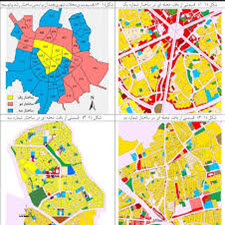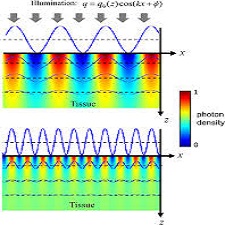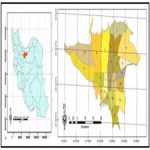توضیحات
چکیده
ارزیابی و تحلیل سیستم های شهری نشانگر سیاست گذاریها و نحوه پخشایش جمعیت در پهنه سرزمین می باشد. با مطالعه این امر نحوه پخشایش و میزان تعادل در توزیع جمعیت مشخص تر می شود. همچنین روند روبه رشد شهرنشینی در دهه های اخیر تعادل در ساختار فضایی شهرها را الزامی نموده است. در این راستا بررسی الگوی نظام شهرنشینی و نحوه توزیع اندازه جمعیت سکونتگاه های شهری یک ضرورت تلقی می شود. هدف از این مقاله ارزیابی و تحلیل نظام شهری استان مازندران با تکیه بر نحوه پراکندگی جمعیت شهرهای این استان با استفاده از مدلها و تکنیکهای رایج در زمینه تحلیل نظام شهری (مرتبه – اندازه زیپف، الگوهای نخست شهری و ضریب آنتروپی) در پنج دوره سرشماری (1390-1355) می باشد. نوع تحقیق کاربردی – توسعه ای و روش آن توصیفی – تحلیلی است. بخش های نظری پژوهش حاضر به صورت کتابخانه ای و با استفاده از منابع داخلی و خارجی انجام شده و آمارهای مورد نیاز از طریق مراکز و سازمان های دولتی تهیه شده است. در این تحقیق جامعه آماری شامل کلیه نقاط شهری استان مازندران در سالهای 1390- 1355 می باشد. نظم فضایی موجود در نحوه پراکنش شهرهای استان در انطباق کامل با نظم ها و تئوری های تجربه شده نمی باشد. تحلیل یافته ها حاکی از آن است که نظام شهری استان مازندران از قانون رتبه – اندازه پیروی نمی نماید و الگوی نخست شهری حاکم است، اما شدید نیست و همچنین ضریب آنتروپی درسالهای آخر دوره مورد مطالعه وضعیت نسبتاً بهتری را کسب کرده است.
ABSTRACT
The evaluation and analysis of urban systems reflects the policies and how the population is distributed in the territory of the land. By studying how distribution and balance of distribution in the population are more specific. Also, the growing urbanization in recent decades has required equilibrium in the spatial structure of cities. In this regard, the study of the pattern of urbanization and the distribution of population size of urban settlements is considered a necessity. The purpose of this paper is to evaluate and analyze the urban system of Mazandaran province based on the distribution of population of the cities of this province using the common models and techniques in the analysis of urban system (rank size – zipp, urban primary patterns and entropy coefficient) in five census periods 1390-1355). The type of applied research is development and its method is descriptive-analytical. The theoretical sections of the present study were conducted in a library using internal and external resources and required statistics were provided through government agencies and centers. In this research, the statistical population consisted of all urban areas of Mazandaran province during 2011-2011. The spatial order in the distribution of provincial cities is not consistent with the orderly and theorized theories. Analysis of the findings suggests that the urban system of Mazandaran province does not follow the rank-size law and is the predominant urban model, but it is not severe and also the entropy coefficient has been relatively better in the last years of the studied period.
Year: 2017
Publisher : First Conference on Challenges and Providing New Urban Management Solutions
By : Morteza Heidari, Reza Khanuni
File Information: Persian Language/ 13 Page / size: 615 KB
Only site members can download free of charge after registering and adding to the cart
سال : 1395
ناشر : اولین همایش بررسی چالش ها و ارایه راهکارهای نوین مدیریت شهری
کاری از : مرتضی حیدری ,رضا کانونی
اطلاعات فایل : زبان فارسی / 13 صفحه / حجم : KB 615










نقد و بررسیها
هنوز بررسیای ثبت نشده است.